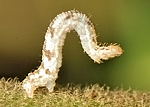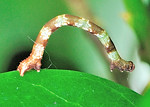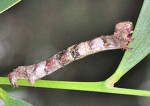|
| |
Order Lepidoptera
- This page contains pictures and information about Moths and
Caterpillars in family
Geometridae that we found in the Brisbane
area, Queensland, Australia.
-
 - Looper Caterpillar
-
- The superfamily Geometroidea includes only one family,
Geometridae. This is one of the largest moths family.
-

  - Moth, wingspan
50mm
Wingspan
15mm
Pupa
-
- Adult moths in this family
Geometridae are from small to large in size. They all have board
wings. Most of the them have camouflaged wing patterns. These patterns are usually wavy
lines extend across both fore and hind wings. These moths rest with a standard
posture, holding wings outspread and tightly pressed against the surface
on which they are resting, with the antenna held under forewing. This eliminates the shadow as well as the wings
outline for a better camouflaged posture.
-
- Their
antenna are simple or bipectinate. The thorax is
usually clothed in short lamellar scales. They may have slender or stout
body and usually with short smooth scales.
-
- Almost
all Geometridae moths are active at night, They are weak fliers.
-
- Eggs
are nearly always of the flat type, although some are upright. They may be
lay singly, in pair or in groups.
-
- Most of the Caterpillars in this family
Geometridae have only one or two pair of prolegs (instead of four
pairs). The anal prolegs are well developed. The caterpillars move with curving their bodies into
loops. This is why they commonly called Loopers. They are also known as Inch
Worms because they apparently measuring off one inch at a time as they move.
Some of them are called Twig Caterpillars because their resting posture camouflages
as twig or stick.
-
 
 - Caterpillar
moving
Camouflage as twig
-
- The
Geometridae caterpillars
are usually hairless and with slender body. They are well
camouflaged in green or brown in colour. Most of them feed on leaf and active
during the night. Most of them feed and rest openly and do not have any
shelter. Only a few species conceal themselves with leaves and loose
silks.
-
- Most of the caterpillar in this family are easy to rear. They
usually
pupate in plant materials or in soil with a flimsy cocoon.
-
-
Geometridae is
a large family. We found many of them in Brisbane and listed as below.
Some
species the patterns on wings are variable. Shape of fore wings and hind wings
help in the identification.
Subfamily
Ennominae - Twig Caterpillars
- ENNOMINAE - Most Caterpillars in
this subfamily are resemblance to dead twigs or other parts of their food
plants. The adult moths are active at night. Most of them are grey or dark
brown in colours.
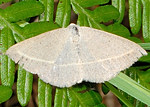
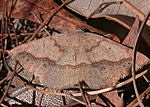 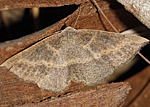
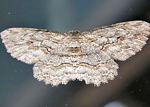
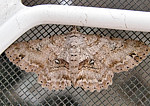
 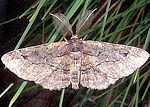
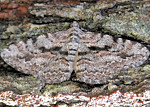 -
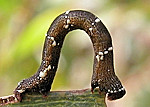
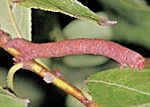 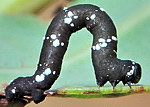
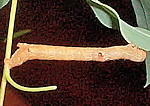 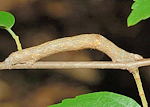
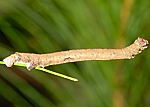
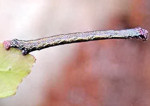
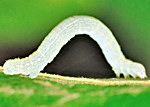
Subfamily
Oenochrominae - Loopers Caterpillars
- OENOCHROMINAE - For the
adults in this subfamily, there are the stout-bodied group and the
slender-bodied group.
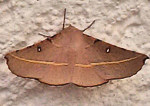 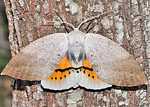
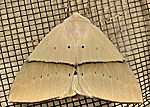
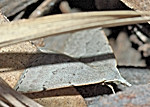
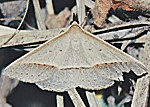 -
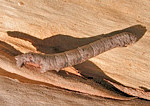
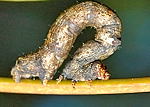
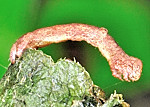
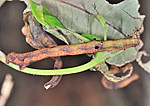
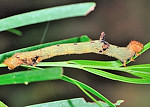
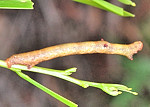

Subfamily
Geometrinae - Emeralds
- GEOMETRINAE - The mature caterpillars in this subfamily only have one pair of ventral prolegs. They can move only in the looper fashion. Adults fly weakly at night. Some are green in colour hence the common name Emeralds.
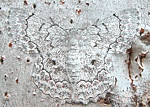
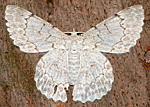
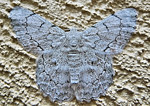
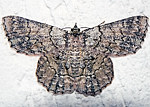
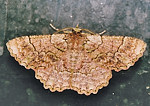

 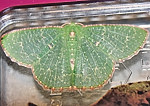
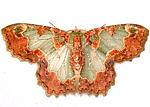
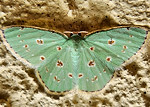 -
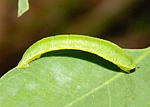
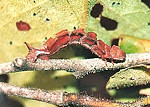 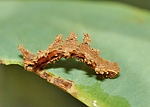
Subfamily
Sterrhinae - Waves
- STERRHINAE - Moths in this subfamily are small in
size with wingspan of less tha 20mm. They are usually pink or
yellow in colour. They usually have transverse lines on both wings.
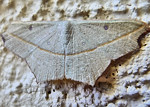
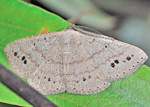 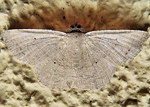
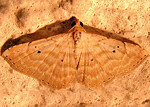 -
Subfamily
Larentiinae
- Carpets
- LARENTIINAE - Moths
in this subfamily are from small to medium in size. They are mostly brown
with patterns of distinct transverse wavy lines across wings. Their common
name Carpet refers to those patterns on their wings.
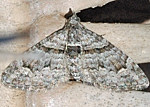
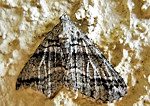
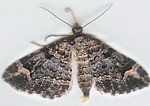
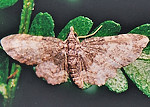 -
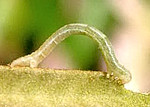
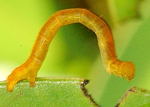 -
- Reference:
- 1. Moths
of Australia - I. F. B. Common, Melbourne University Press,
1990, p359.
- 2. Insects of Australia and New Zealand - R. J. Tillyard, Angus
& Robertson, Ltd, Sydney, 1926, p424.
- 3. A
Guide to Australian Moths - Paul Zborowski, Ted Edwards, CSIRO
PUBLISHING, 2007, p137.
- 4. Northern
Territory Insects, A Comprehensive Guide CD - Graham Brown, 2009.
- 5. Moths
of Victoria Part 3 - Waves & Carpets - GEOMETROIDAE (C) - Peter
Marriott, Entomological Society of Victoria, 2011.
- 6. GEOMETRIDAE of Australia
- Don Herbison-Evans & Stella Crossley, 2011.
[ ENNOMINAE ] [ OENOCHROMINAE ] [ GEOMETRINAE ] [ STERRHINAE ] [ LARENTIINAE ] [ Unknown Loopers ]
Back to Top
| |
|

























































